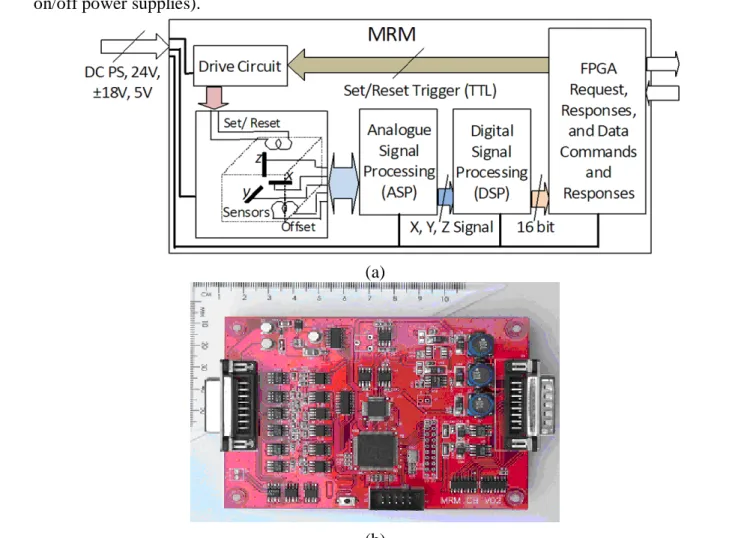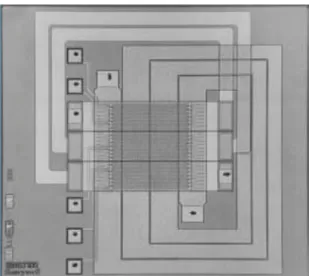1
國立成功大學「發展國際一流大學及頂尖研究中心計畫」
延攬優秀人才工作報告表
NCKU Project of Promoting Academic Excellence & Developing World Class Research Centers Work Report Form for Distinguished Scholars
□續聘continuation of employment ■離職resignation
100 年 04 月 27 日更新
受聘者姓名
Name of the Employee
伊馬可
■男
女 Male Female 聘 期 Period of Employment From 100 年(y) 01 月(m) 01 日(d) to 100 年(y) 03 月(m) 31 日(d) 研究或教學或科技研發與 管理計畫名稱 The project title of research,teaching, technology development and management
邁向頂尖大學計畫
計畫主持人 (申請單位主管) Project Investigator (Head of Department/Center)陳秋榮
補助延聘編號Grant Number HUA 99 – 23T - 17 - 084
1、研究、教學、科技研發與管理工作全程經過概述。(由受聘人填寫)
Please summarize the entire research, teaching, or science and technology R&D and management work process (To be completed by the employee)
1. Development of Magneto-Resistive Magnetometer for sounding rocket experiment.
Due to its small size, low cost, and high sensitivity, the anisotropic magneto-resistance (AMR) sensor has been utilized for measurement of magnetic fields from 1 nT up to 1 mT, both in fundamental science and technology. Applications include navigation devices, automotive products, non-destructive evaluation and recently space plasma science measurements on satellites and sounding rockets.
In the development of our Magneto-Resistive Magnetometer (MRM) system we use AMR solid state sensors as the MRM sensor head. An AMR sensor is made by depositing a very thin film of permalloy on a silicon wafer. When an external magnetic field is applied, the magnetization in the permalloy rotates, depending on the external field strength, causing a change in the electrical resistance by 2-3%. The change of resistivity can be measured by passing a sense current through the element. The linear behavior of the AMR resistor stripe is achieved by the usage of “barber pole” aluminum bar structures. The permalloy stripes are covered with aluminum bars having an inclination of + or - 45° to the permalloy stripe axis. Since Aluminum has a much lower resistivity than permalloy, the barber poles cause a change of the current direction. However, the single AMR resistor stripe is not suited because it does not provide a zero reference, and it has a high resistance tolerance and a temperature coefficient. These drawbacks are avoided by using a Wheatstone bridge configuration. Furthermore the output signal of the bridge is twice as high as with a single AMR resistor stripe. During manufacture, the bridge is balanced by laser trimming, and an extremely sensitive field detector can be made.
The AMR magnetic sensors are available as 1 or 2, axis sensors and come in plastic or ceramic chip packages, weigh a few grams, and are optimized for the Earth’s field
2
measurement with typical sensitivities of 3.2 mV/V/gauss. In comparison with conventional fluxgate magnetometers, MRM sensor is much smaller in size and weight and consumes much less power, which is a very important consideration for satellite missions with tight resources.
MRM System Layout
Our MRM instrument is a three-axial vector magnetometer having one AMR sensor in each of its three axes. The sensor head can measure magnetic fields in the range of +/- 50,000 nT with 1.5 nT/digit resolution. The field signals from the sensor head are fed to the analogue signal conditioning circuit (ASC). As shown in Figure 1(a), this circuit utilizes an instrumentation amplifier (which amplifies the signal to the appropriate level), an offset feedback (to reduce the offset), a 1 kHz flipping drive (to optimize the magnetic domains for most sensitive performance and for extraction of bridge offsets), and a low-pass filter unit. The ASC feeds the signals to the digital signal conditioning circuit (DSC). Multiplexer prepares the signals for the conversion using 16-bit analogue to digital converter (ADC). The main DSC unit is the field-programmable gate array (FPGA), which gathers signal data, performs their digital noise filtering, prepares the data packets for the magnetometer output, sends trigger pulses to the flipping drive, and runs all other commands necessary to control the instrument (e.g., turn on/off power supplies).
(a)
(b)
3
Linearity, Cross-field and Temperature Compensation
To reduce noise and improve sensitivity, AMR sensors include two additional coil circuits (see Figure 2). A built-in set/reset coil powered by a flipping drive circuit is used periodically to align the internal magnetic anisotropy direction of the domains. The linearity, cross-field and temperature compensation are based on the MRM transfer characteristics, and simple iteration method. In open-loop magneto-resistive systems the dependencies of the offset and sensitivity need to be checked, both in sensors and electronics as they exhibit non-linear dependencies.
Figure 2. Honeywell AMR sensor with integrated flat flipping coil
Future Work
We at PSSC/NCKU have started to develop the necessary circuitry, adapted from fluxgate and SQUID designs, and are continuing to improve sensitivity and lowering power requirements. Laboratory calibration experiments have been performed on an MRM Engineering Model and linearity and cross-field data have been obtained. MRM Flight Model has been built and is currently being commissioned in-lab. Future work will involve thermal test of the MRM sensor to determine its temperature performance in the space environment conditions. Moreover, field calibration tests will be performed against measurement by the proton precession vector magnetometer.
Specification of the MRM Design:
Sampling rate of each axis: 1 kHz Resolution: 1.5nT/digit.
Sensor Type: 3-axis, (magnetoresistive, Honeywell HMC1001 and HMC1002) Dynamical Range: +/-50,000 nT
Sampling Rate: 1000 Hz Resolution: 1.5 nT Size/Weight:
4 Sensor: 25x20x15 mm/25g
Electronics: 170x120x30/250g Output Format: Digital 16bits/axis
二、研究或教學或科技研發與管理成效評估(由計畫主持人或單位主管填寫)
Please evaluate the performance of research, teaching or science and technology R&D and management Work: (To be completed by Project Investigator or Head of Department/Center)
(1)是否達到延攬預期目標?
Has the expected goal of recruitment been achieved?
Yes, Dr. Marko Istenic has achieved the expected goal.
(2)研究或教學或科技研發與管理的方法、專業知識及進度如何?
What are the methods, professional knowledge, and progress of the research, teaching, or R&D and management work?
Dr. Marko Istenic develops the MRM instrument and helps space science experiment. (3)受延攬人之研究或教學或科技研發與管理成果對該計畫(或貴單位)助益如何?
How have the research, teaching, or R&D and management results of the employed person given benefit to the project (or your unit)?
These developments contribute to promoting space science experiment at PSSC. (4)受延攬人於補助期間對貴單位或國內相關學術科技領域助益如何?
How has the employed person, during his or her term of employment, benefited your unit or the relevant domestic academic field?
The magneto-resistive magnetometer (MRM) development project for space science experiment was led by him, and also he is supporting the test facilities development.
(5)具體工作績效或研究或教學或科技研發與管理成果:
Please describe the specific work performance, or the results of research, teaching, or R&D and management work:
He has knowledge of space science experiment and helps train a student in the MRM development. (6)是否續聘受聘人? Will you continue hiring the employed person?□ 續聘 Yes ■不續聘 No
Dr. Marko has resigned from PSSC/NCKU and got a new job at the Joint European Torus (JET) facility located in England.

